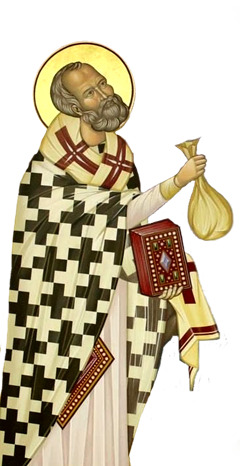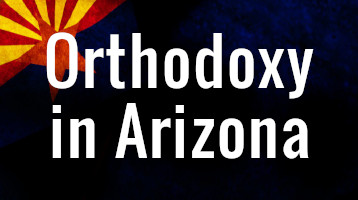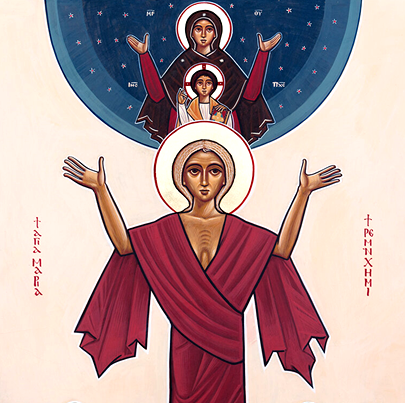Some say St. Nicholas existed only in legend, without any reliable historical record. Legends usually do grow out of real, actual events, though they my be embellished to make more interesting stories. Many of the St. Nicholas stories seem to be truth interwoven with imagination. However, the following facts of the life of St. Nicholas contain historical truth.
 Nicholas’ Birth in Patara – Though the exact date of his birth is not known, it is believed to have occurred between AD 260 – 280. The place, Patara, can be historically grounded. Orthodox Tradition states that St. Nicholas has promised to help those who remember his parents, Theophanes and Nonna in prayer.
Nicholas’ Birth in Patara – Though the exact date of his birth is not known, it is believed to have occurred between AD 260 – 280. The place, Patara, can be historically grounded. Orthodox Tradition states that St. Nicholas has promised to help those who remember his parents, Theophanes and Nonna in prayer.- Dowries for the Poor Girls – This story, distinct to St. Nicholas, can be regarded as historical in its essence. There are three very ancient accounts which only differ in regard to the number of maidens and other minutia. This event reveals important aspects of St. Nicholas’ personality, namely, his charitable nature an humility. This story is not found in the accounts of other saints’ lives.
- Popular election as Bishop of Myra – Unusual thought it was for a layman to be nominated to the position of bishop, it is not unknown in Christian history, and two sources corroborate the story.
- Participation in the Council of Nicea – Nicholas name appears on the oldest Greek list of attendees, and on five other lists of participating bishops.
- Saving Three Condemned Innocents – This story is the oldest and most genuine recorded episode from the life of St. Nicholas. Historical documentation confirms many references to place names and people. Some versions expand the account to include the story of the three generals.
- Intervention in favor of the Unjustly Jailed – The outstanding figures in this solidly structured story are well know in other contemporary accounts of his life, where they are portrayed in similar ways.
- Destruction of the Temple of Artemis – This account reveals knowledge of detail concerning the Temple which would have been unknown to a writer several centuries later had it not been based on an account coming out of the people and traditions of the city.
- Mariners saved during a Tempest – This episode is important to explain the origin of his wide-spread patronage among sailors and other sea voyagers.
The ancient sources cited to substantiate this information are Michael the Archmandrite, Sinaitic and Ethiopian manuscripts, Gratianus’ Decretum, Theodore the Lector, Andrew of Crete, Eustratios of Constantinople, AD 583; Passionarium Romanum, AD 650; and Praxis de Tribute.



